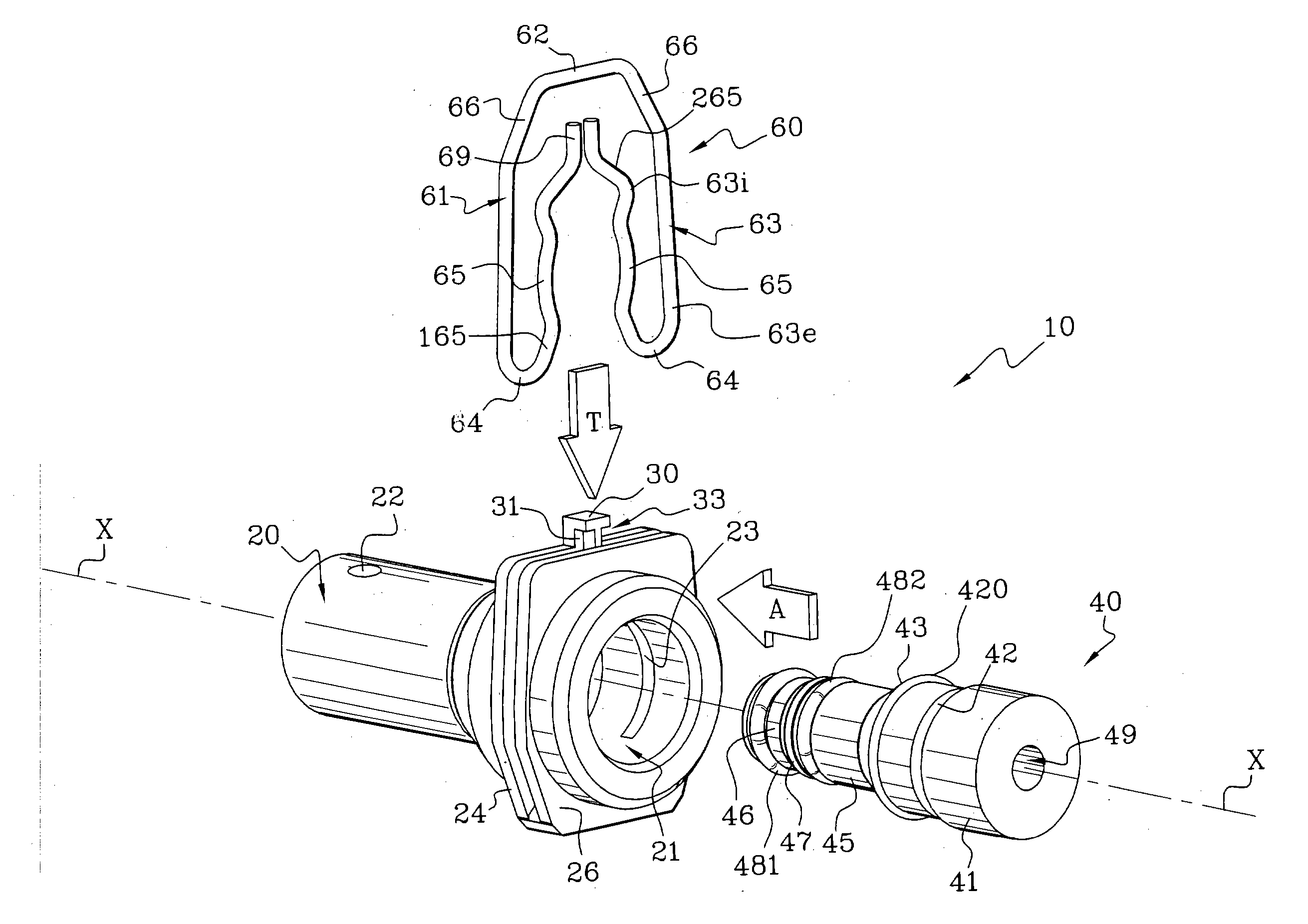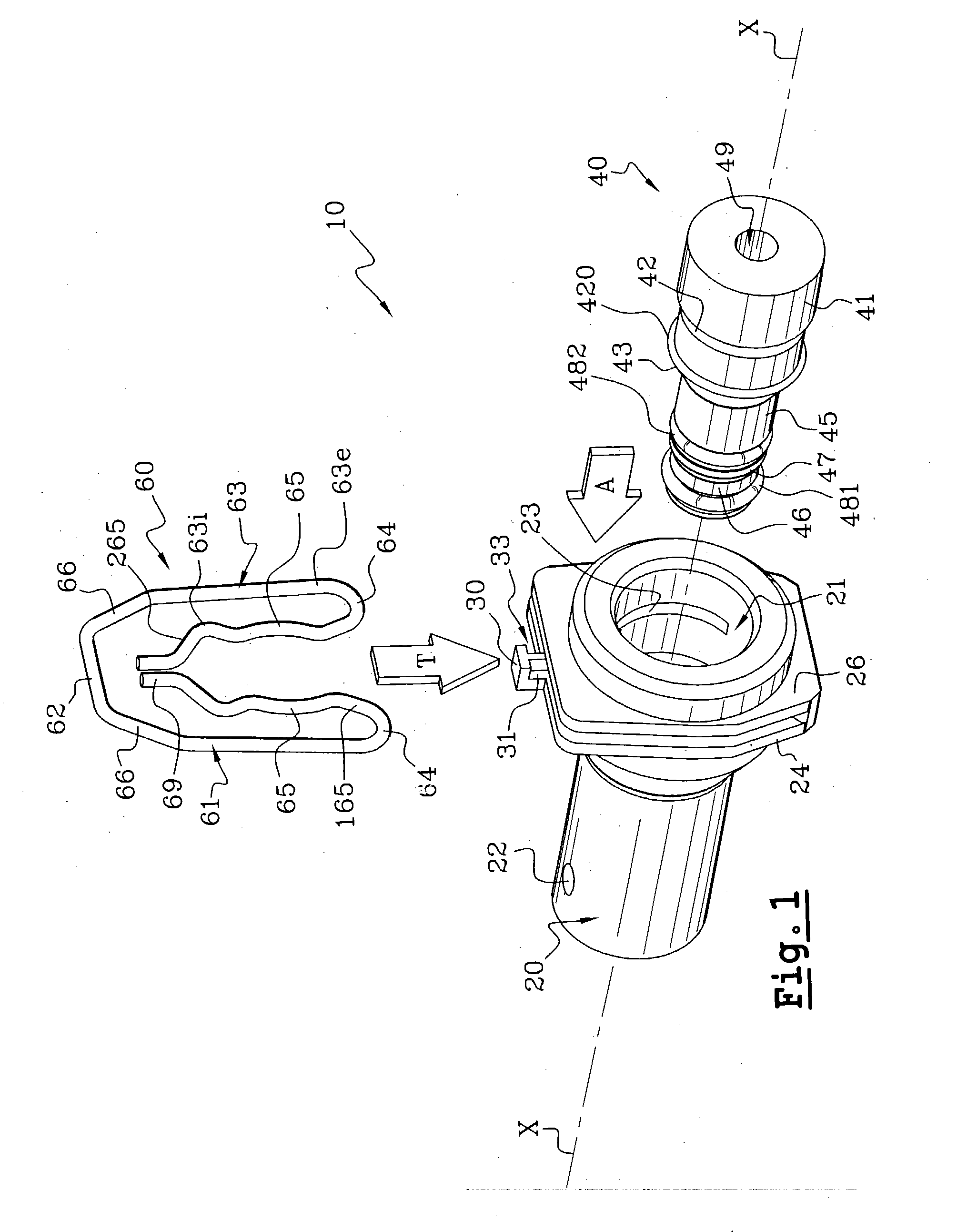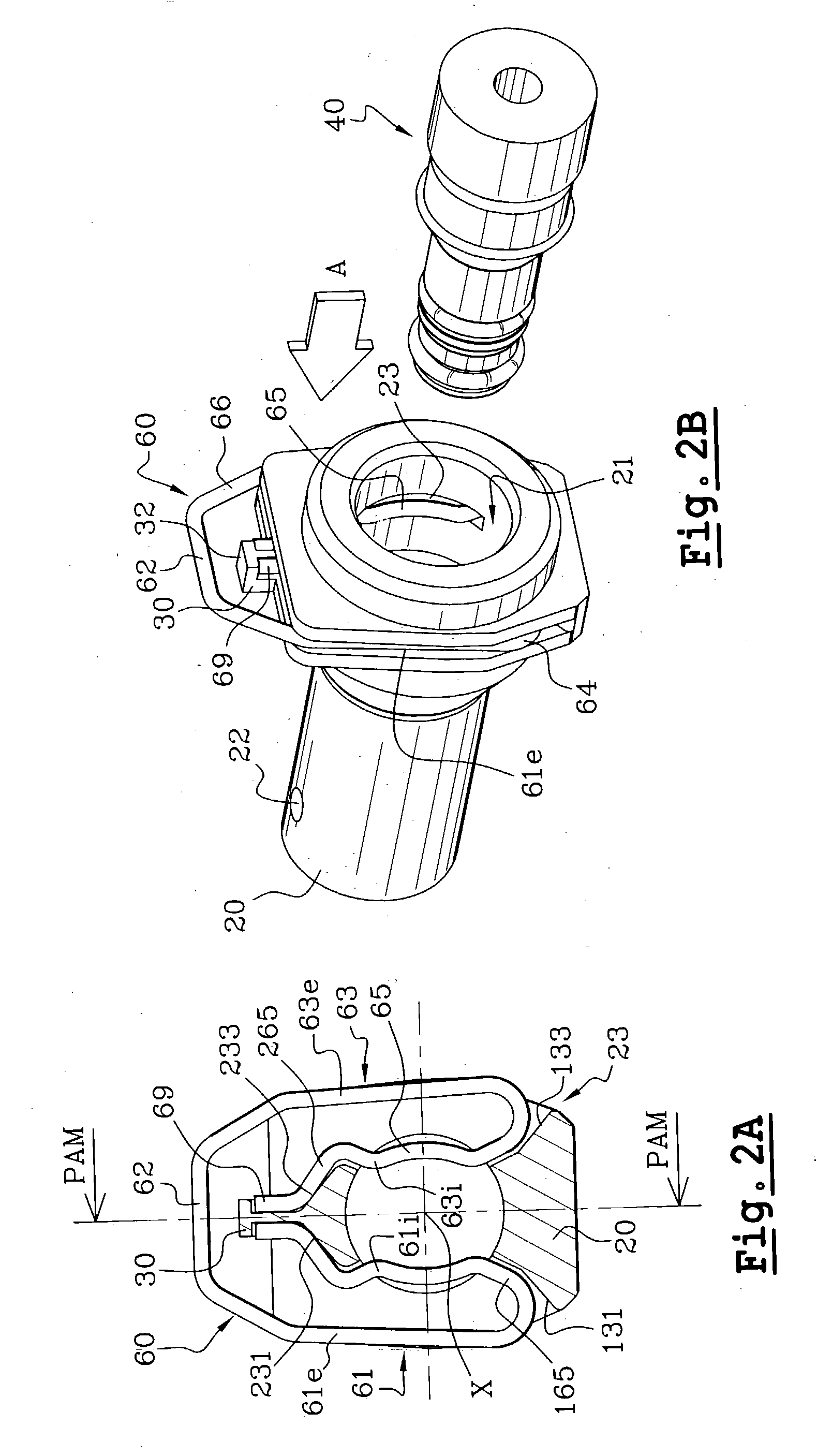Feed pipe coupling for a pressurised fluid system
a technology of pressurised fluid and feed pipe, which is applied in the direction of couplings, mechanical equipment, etc., can solve the problems of not being able to exert visual control, the coupling is not easy to connect in the locking position by the operator, and is not compatible with production requirements
- Summary
- Abstract
- Description
- Claims
- Application Information
AI Technical Summary
Benefits of technology
Problems solved by technology
Method used
Image
Examples
Embodiment Construction
[0055] In the following description, in order to facilitate understanding, the expressions vertical, horizontal, anterior, posterior, left, right etc. will be used with reference to the Figures and in accordance with the definitions given in the description, but this is not to be taken as limiting.
[0056] In the description, those elements which are identical, similar or analogous to each other will be designated by the same reference signs.
[0057] The feed pipe coupling for a pressurised fluid system, which is shown in FIGS. 1 to 6, consists essentially of: an anterior body 20 of a feed inlet 21, which in this example is substantially tubular on the axis X, and which may be fixed with respect to an hydraulic device such as an emitter or a receiver (not shown); a posterior connector 40 which is arranged to be fixed to the end of a feed pipe (not shown); and locking means 60 interposed between the connector 40 and body 20 so as to secure them together.
[0058] It is chosen to describe th...
PUM
 Login to View More
Login to View More Abstract
Description
Claims
Application Information
 Login to View More
Login to View More - R&D
- Intellectual Property
- Life Sciences
- Materials
- Tech Scout
- Unparalleled Data Quality
- Higher Quality Content
- 60% Fewer Hallucinations
Browse by: Latest US Patents, China's latest patents, Technical Efficacy Thesaurus, Application Domain, Technology Topic, Popular Technical Reports.
© 2025 PatSnap. All rights reserved.Legal|Privacy policy|Modern Slavery Act Transparency Statement|Sitemap|About US| Contact US: help@patsnap.com



